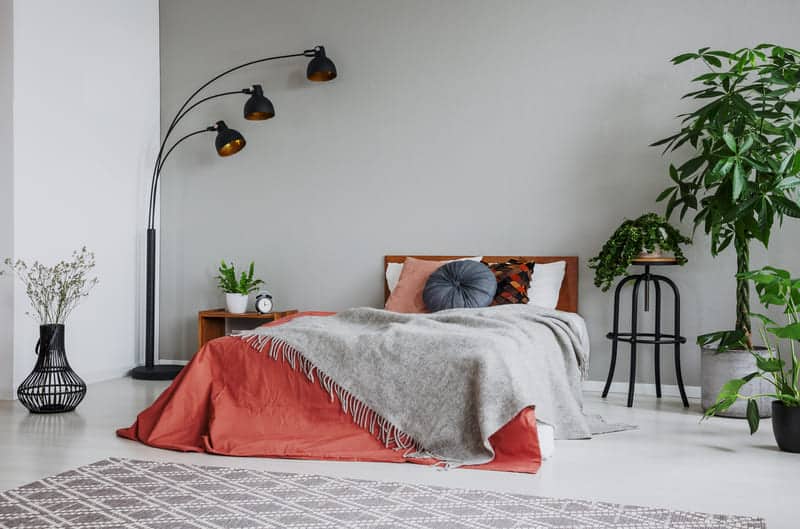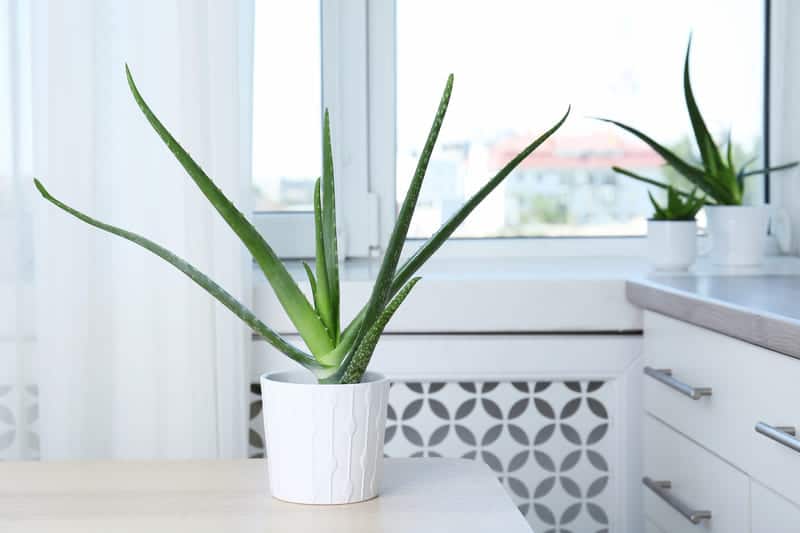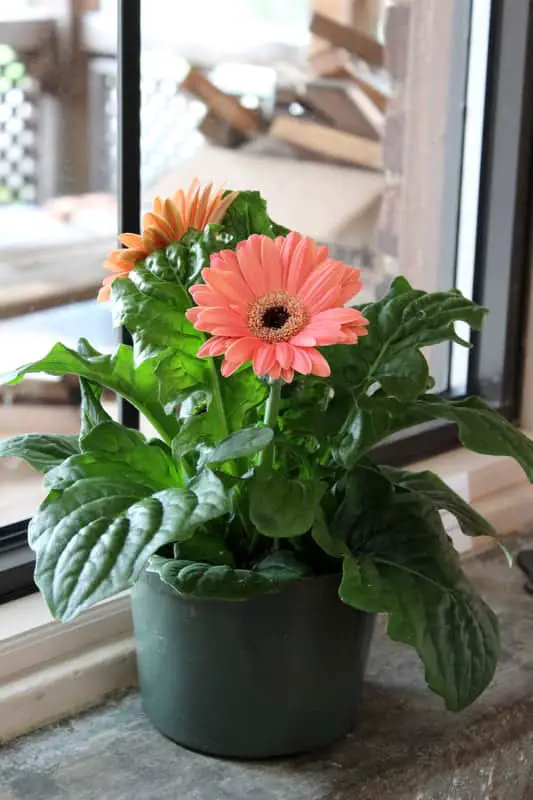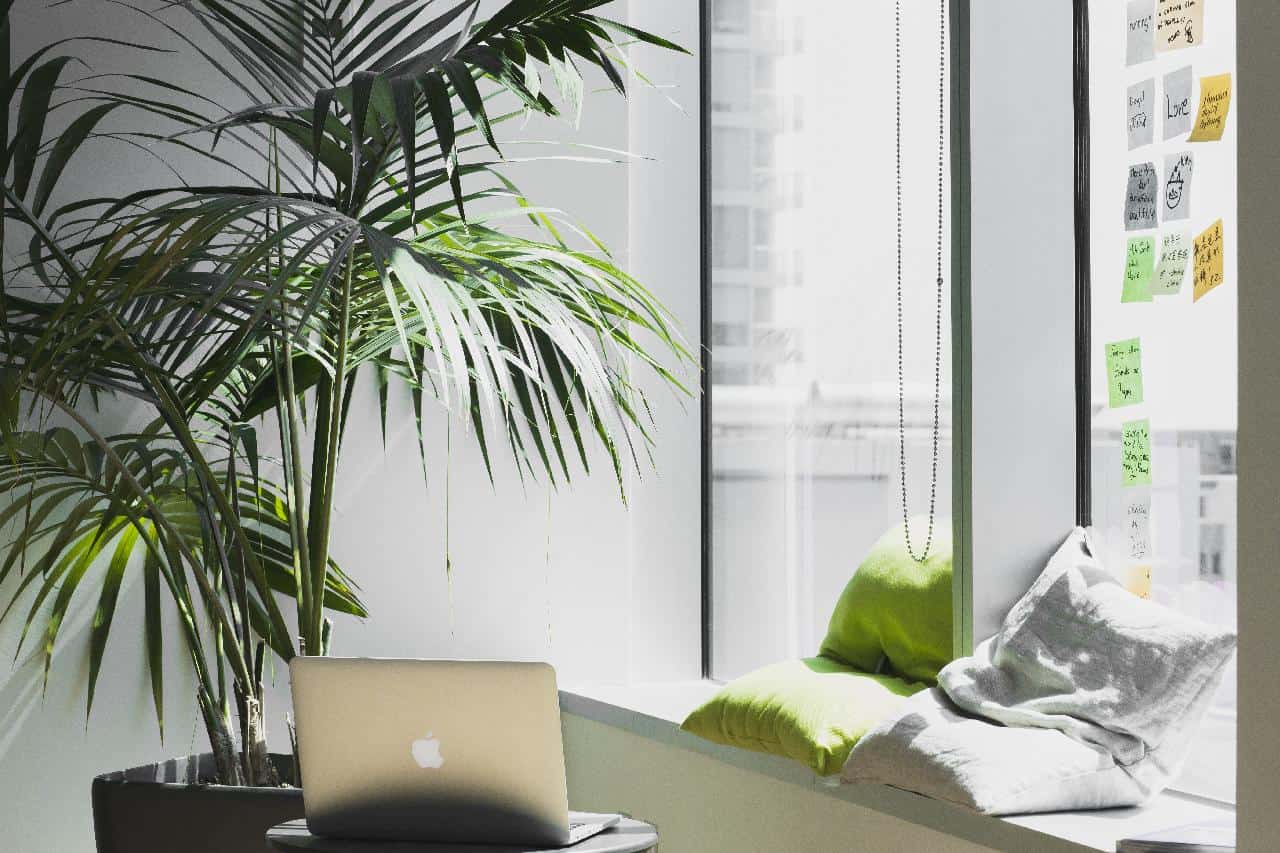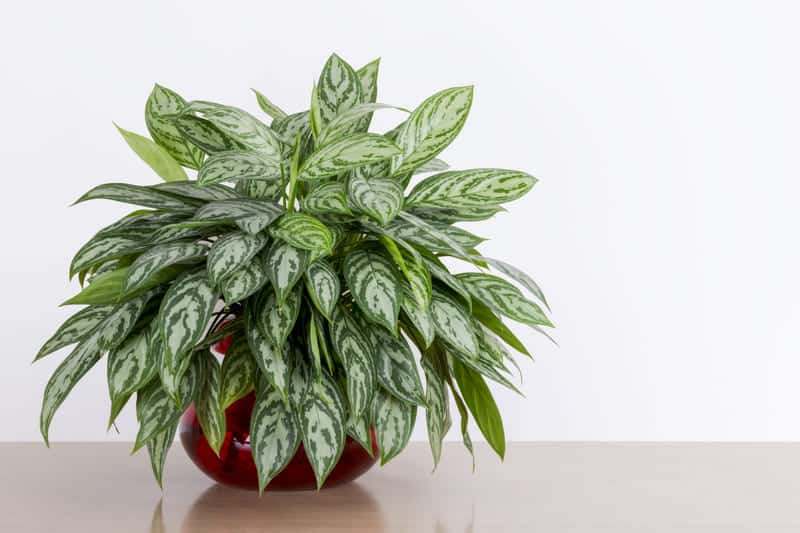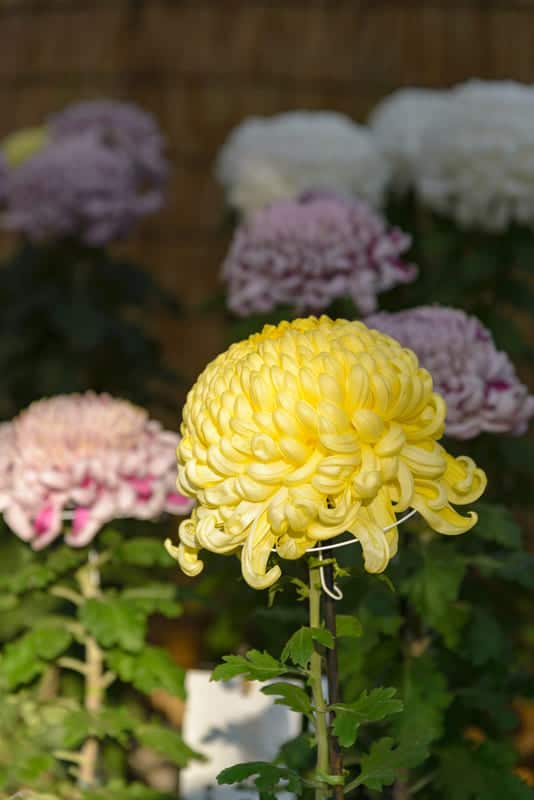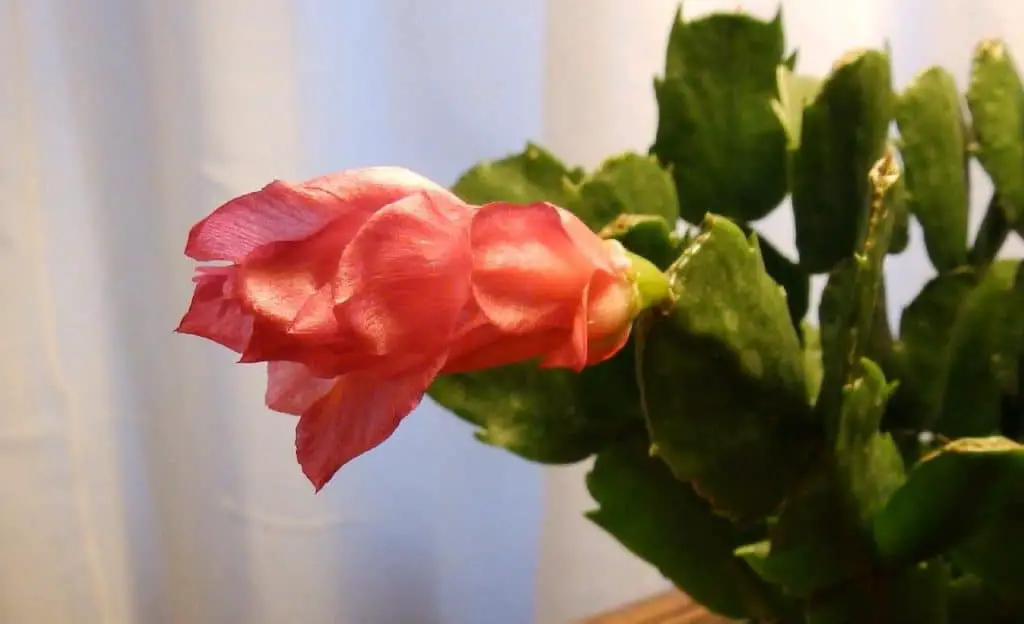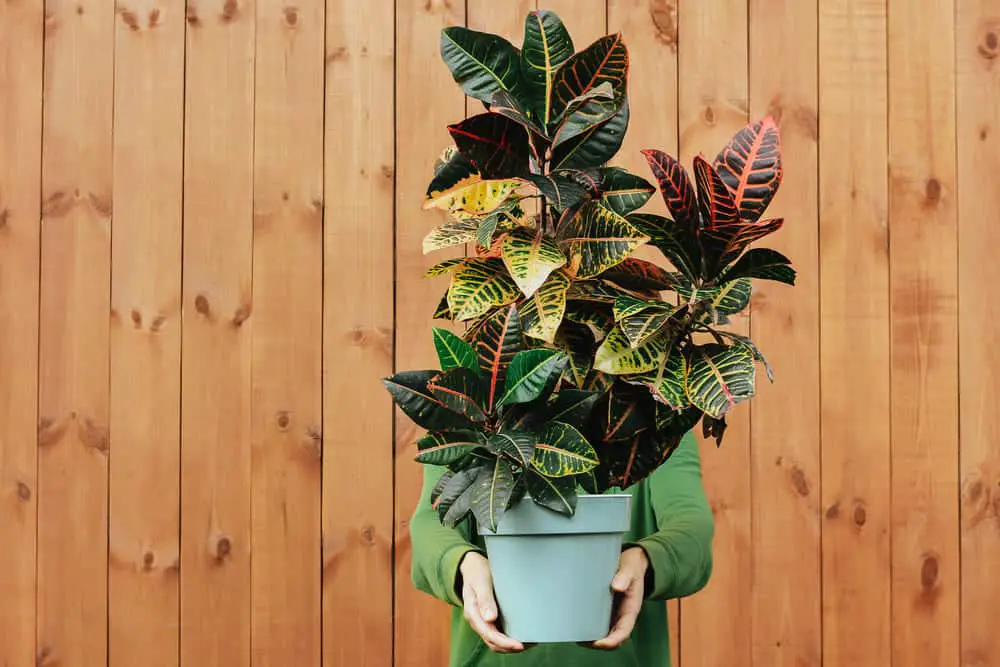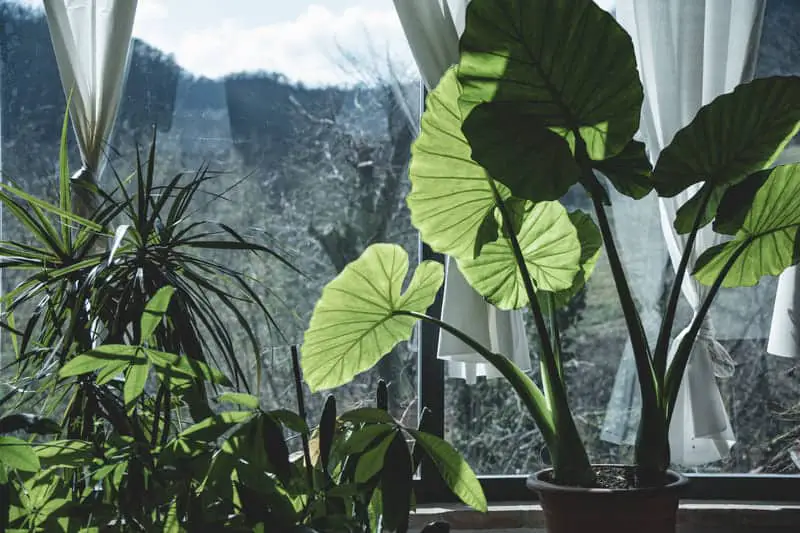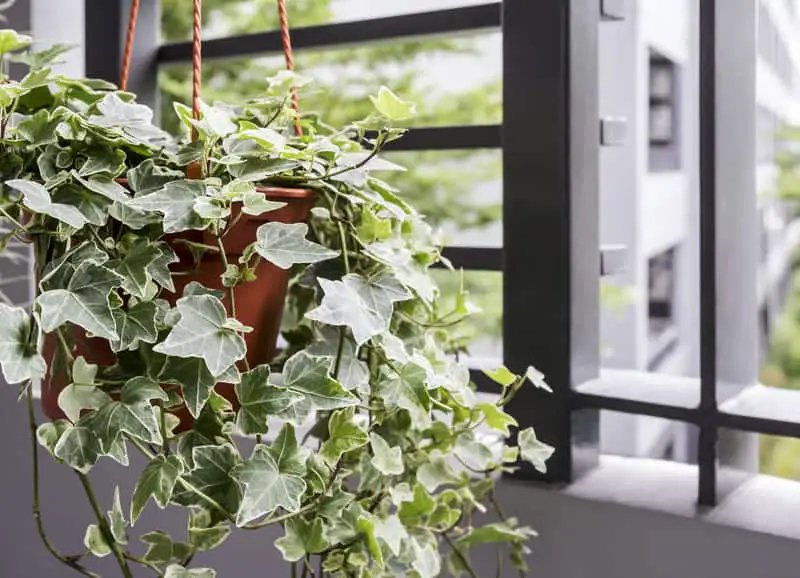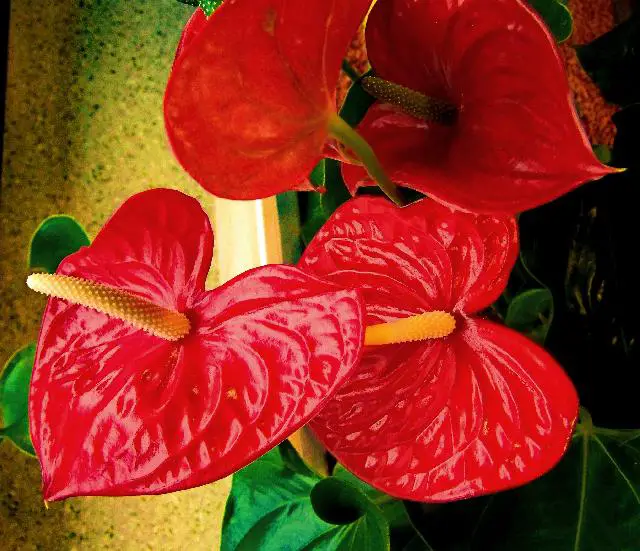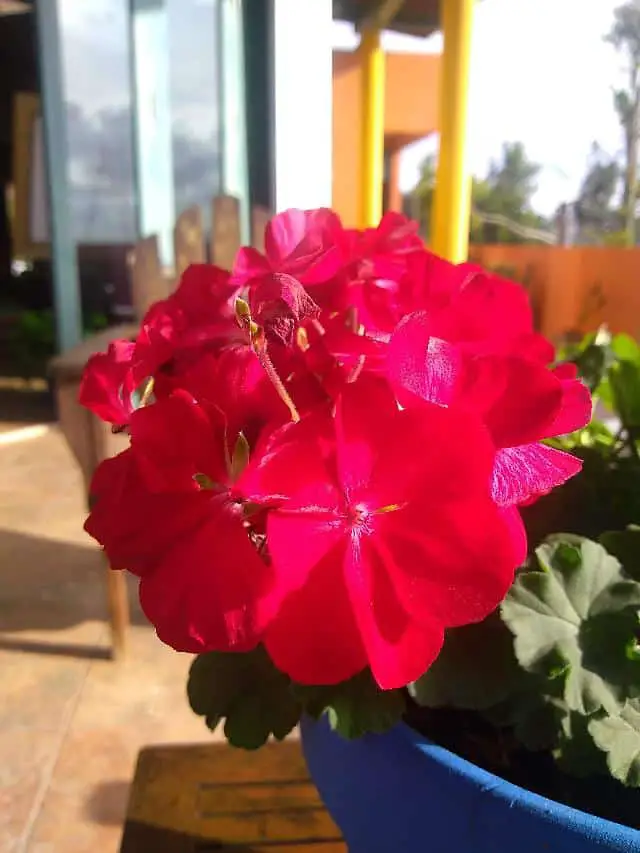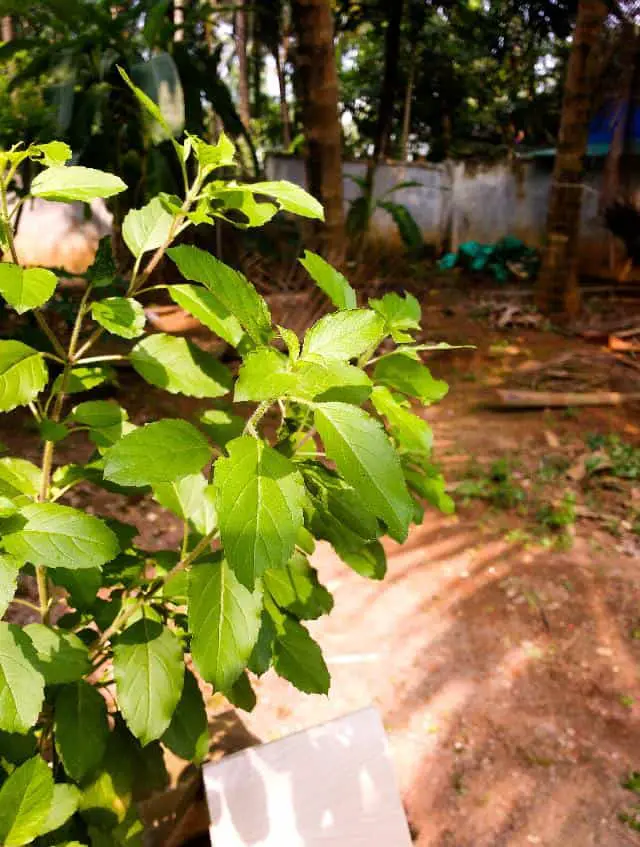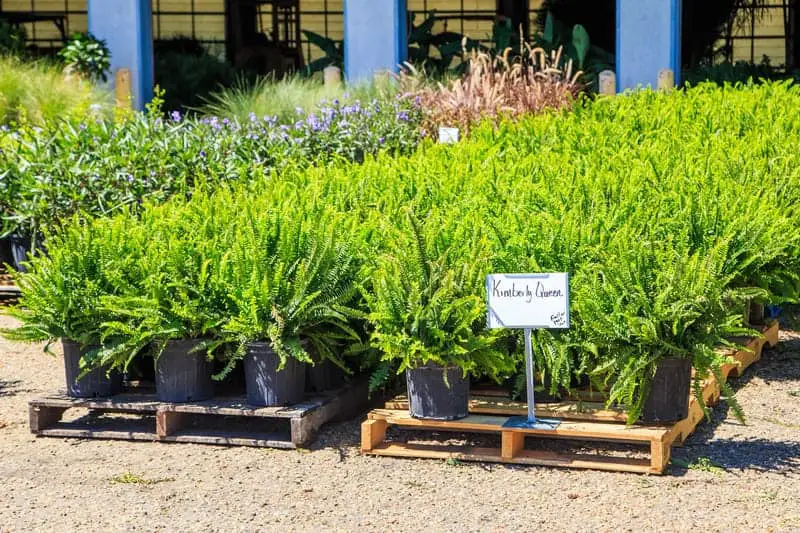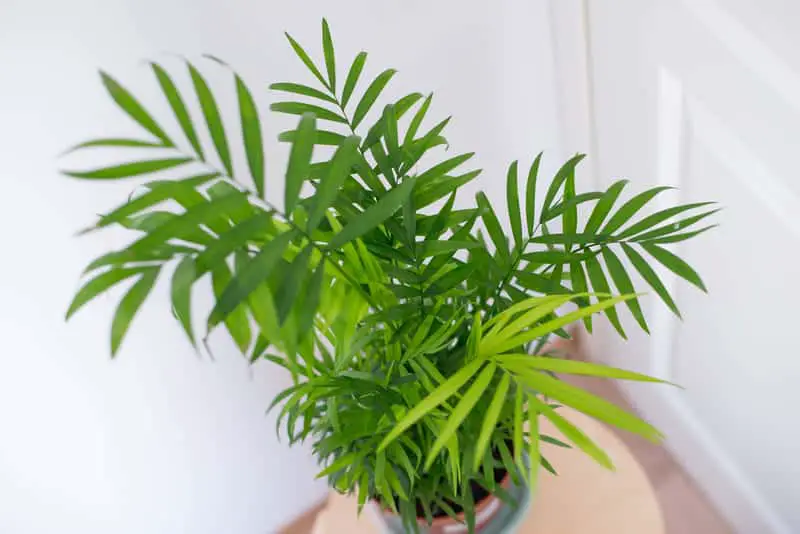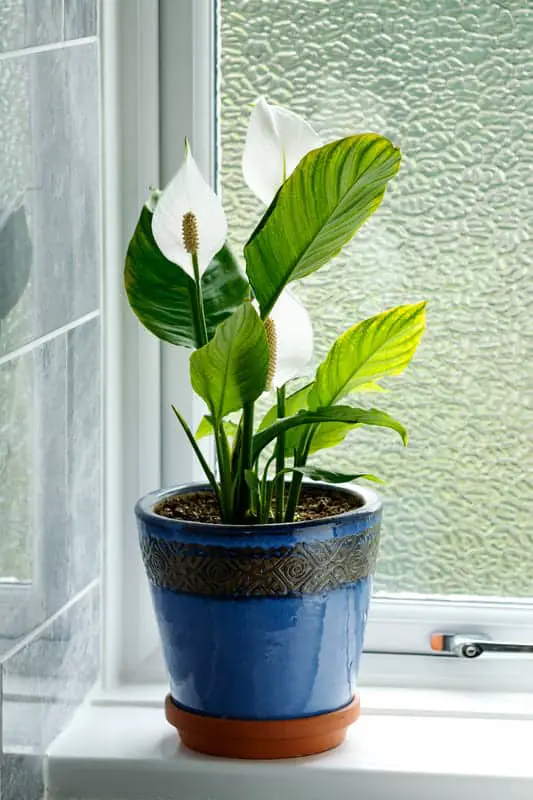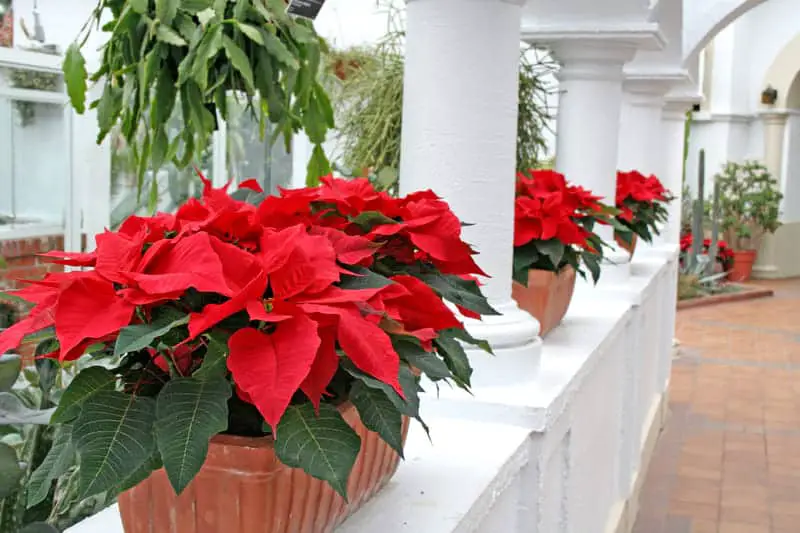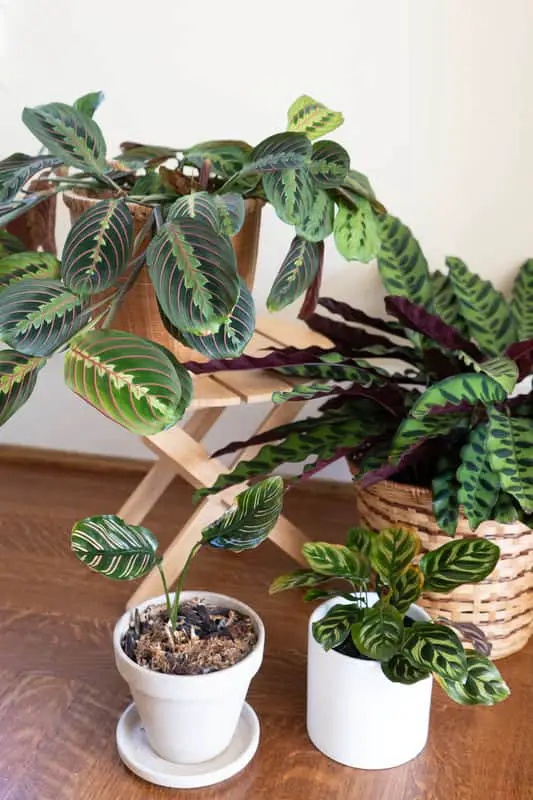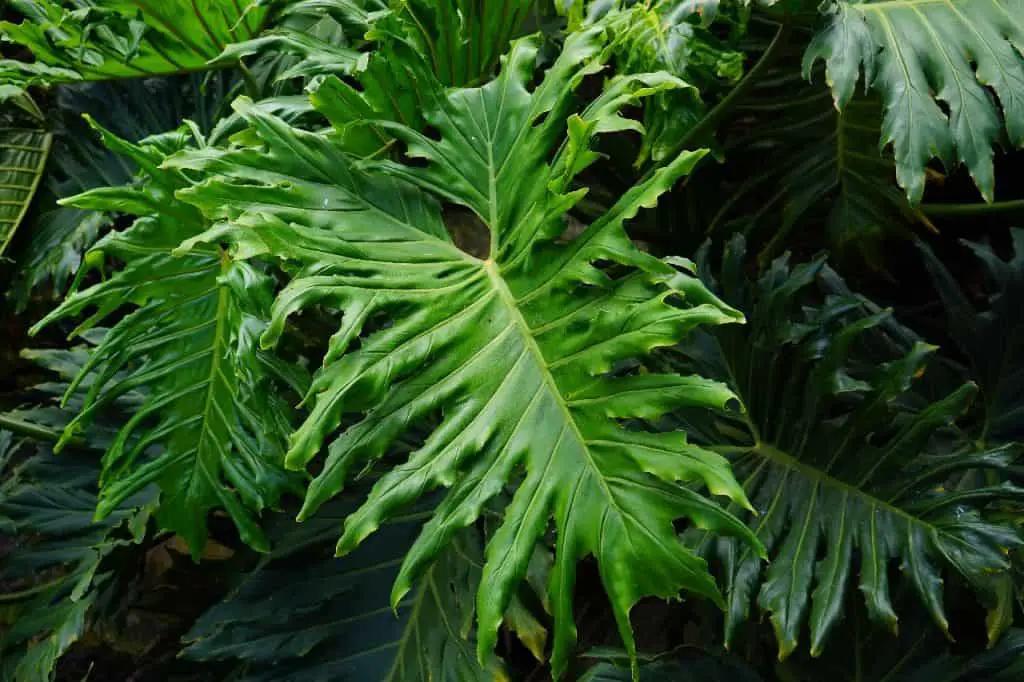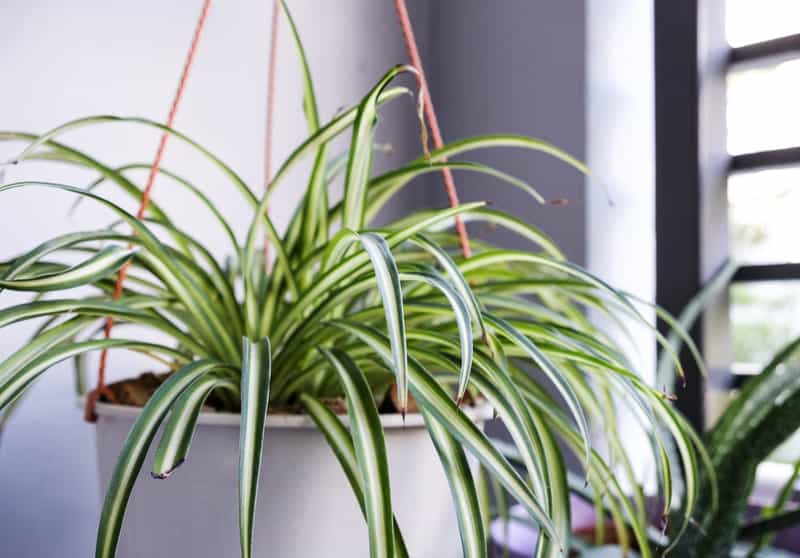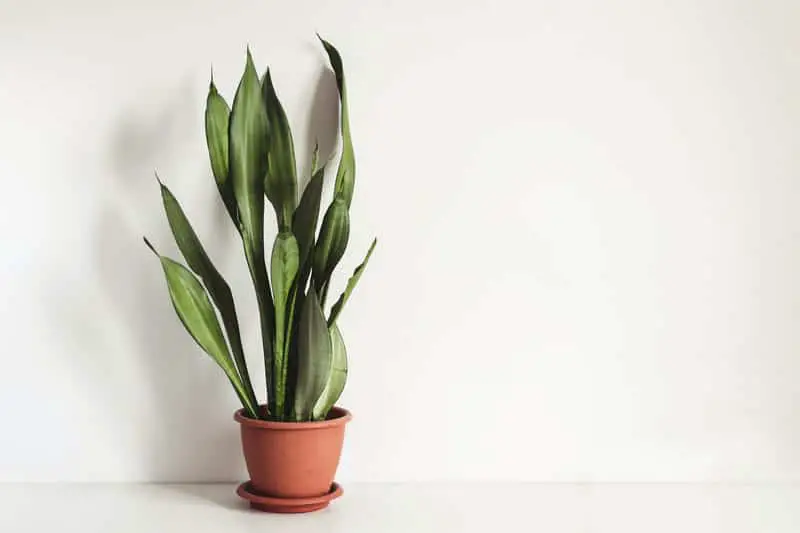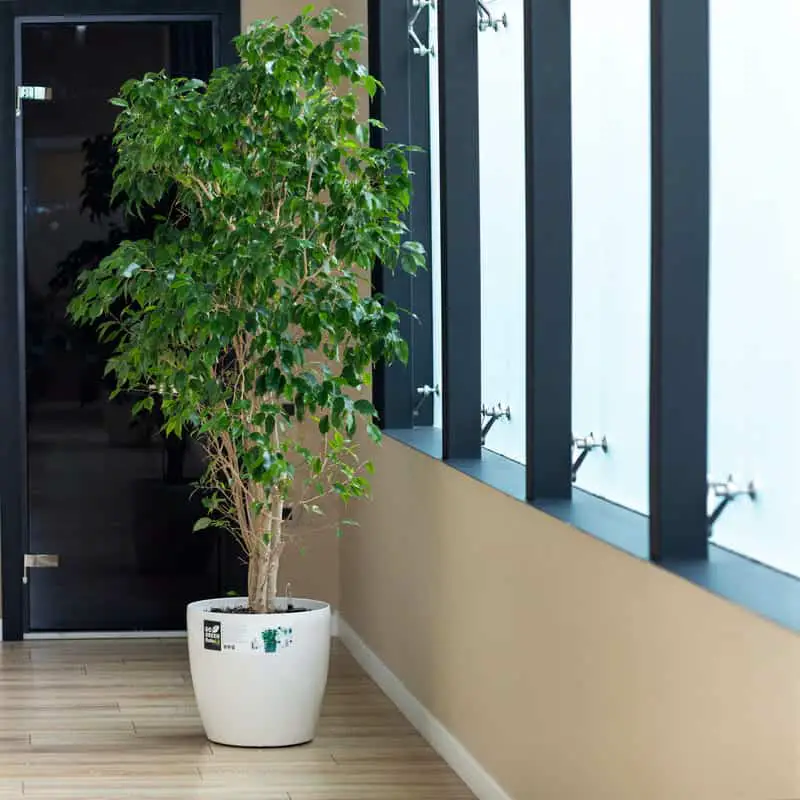While many of us worry about outdoor pollution, our homes can also be places where pollution is evident.
Volatile organic compounds (VOCs) such as formaldehyde often sink into carpets and upholstery, while ammonia, formaldehyde, benzene, toluene and xylene are lurking in our air, according to a NASA Clean Air Report examining the beneficial effects of house plants in clearing our indoor air.
You can read more about the toxins examined in the FAQs below.
Best Indoor Air-Purifying Plants
By contrast, the 25 popular house plants listed below often cheer us up just with their foliage and bright flowers. Now you will be surprised to read that they are also able to purify and improve the quality of air inside our homes.
Read on to see the benefits each listed plant can bring into your office and indoor living spaces.
1. Aloe Vera
Aloe Vera is well-known for the gel which forms inside its long, spongy leaves, which is added to cosmetics, drinks and supplements. As a succulent plant, this is its method of storing water. It is excellent at cleansing the air and removing toxins.
In studies, these plants removed 87% of volatile organic compounds (VOCs) and ammonia. Succulents prefer a marked difference between night and day, in winter 50-55 degrees Fahrenheit is fine. So water them infrequently in winter and move them to open windows in summer is best.
2. Barberton Gerbera
Barberton Gerbera (also known as Gerbera daisies) are really useful plants to remove benzene, formaldehyde and trichloroethylene from the air inside your home. They also bring cheerful colorful daisy flowers so enjoy!
They need plentiful sunshine, between 5-6 hours per day and they enjoy having their leaves misted now and then. They require well-drained soil so ensure there are good drainage holes to avoid saturated roots.
3. Bamboo Palm
Bamboo Palm trees originate in rainforests in Mexico and Guatemala. These tall, elegant leaves sway in the breeze in their natural habitat, spreading runners underground. Their trunks resemble bamboo canes and they can grow to 19 feet tall in the wild.
Indoors, it is best to use warm water to keep this plant moist, in order to fool it that it is still in the steamy jungle! You should only water when it feels dry on the soil surface. Palms need good drainage so do not let its roots sit in water. They like a fertilizer every few months to keep healthy.
The temperature should not fall below 50 degrees Fahrenheit in winter. This palm removed the most formaldehyde of all plants in the test, and large amounts of Benzene so this will keep your office or home air pure. Unlike most palms, it will tolerate a shady area too so it is a perfect plant to cheer up your office space.
4. Boston fern
Boston fern is chosen by the NASA report as one of the best plants to purify the air – see FAQs below. It grows graceful long fronds in pots, bringing peace into your home.
This fern does not like to dry out completely; keep the temperature between 60 and 70 degrees Fahrenheit and cool at night time is preferable. It enjoys good, indirect light so east or north-facing window is ideal.
5. Chinese evergreen
Chinese evergreen likes tropical conditions and prefers the atmosphere to be humid. If the air tends to be dry in your home, and then make sure you mist its leaves regularly.
This plant is known to filter out the pollutants Benzene and Formaldehyde from the air, so you can breathe easier! It is possible to grow Chinese evergreen plants in low-light areas.
For example, close to your computer where everything else fails, they become useful in a shady area as well as decorative. However, this is a toxic plant so take care if you have pets or children that tend to nibble greens.
6. Chrysanthemum
Chrysanthemum (the Morifolium variety) likes a cool temperature. 50-60 degrees Fahrenheit is ideal. If you have a short flowering period, this is usually due to lack of water.
Indeed, under-watering is the biggest problem with these plants, as even one missed day causes the plant to wilt and leaves to fall. Florist’s Chrysanthemum removed all pollutants investigated in the NASA report.
These plants showed their ability to clear the air of toxins in tests so they are wonderful for cleaner air!
7. Christmas cactus
Christmas cactus (or Schlumbergera), is originally a forest plant. In the jungle it attaches itself to trees, climbing around them gracefully so this explains why they seem to flop over in arches in pots in our homes.
That beautiful pink flower which arrives at the tip every Christmas needs its leaves misted frequently. Place it in a well-lit location and keep its temperature between 55 and 70 degrees Fahrenheit when it is growing and producing flowers.
When it is in resting mode, the temperature can drop lower and it should be watered less then too.
8. Croton
Croton (also known as Codiaeum), is a household favorite for its leaf shape and the colorful patterns on its foliage. Keep its compost moist at all times as it needs to be spoilt, so use warm water, not cold!
It is reputedly excellent at removing formaldehyde from your air, rapidly releasing oxygen for you to inhale. It likes warmth so keep the temperature greater than 60 degrees Fahrenheit in winter. There are several beautiful varieties which all enjoy good lighting.
9. Dracaena
Both the red-edged and Cornstalk Dracaenas were studied by NASA and shown to be very effective at air purification. The Red-edged Dracaena is so visually pleasing; no home should be without one!
It is also known as the Madagascar dragon tree. The Cornstalk version is native to Africa and it grows in upland regions.
There is some confusion with these plants; sometimes Cordylines are described as Dracaenas. The rule is that the roots of Dracaenas are orange while those of the Cordylines are white.
10. Elephant Ear Philodendron
Elephant Ear Philodendron has shiny, glossy pointed leaves and is a climber in the jungle, which enjoys indirect light.
In your home, place it in an area with moderate but not direct sunlight. Like all philodendrons, it prefers temperatures above 50 degrees Fahrenheit. It is effective at clearing toxins too.
11. English Ivy
English Ivy (or Common Ivy), is a trailing climber which likes to grow in cool conditions, attaching itself to an outdoor wall easily.
It produces aerial roots which can attach to any available support or can be used to propagate new plants, if placed in soil. They do not like over-heated indoor rooms so mist the leaves frequently.
Think of an English winter! If your room has a nighttime temperature above 60 degrees Fahrenheit, your ivy may complain so move it into a cooler hallway and ensure the soil does not dry out completely.
12. Flamingo Lily
This plant absorbs formaldehyde, ammonia, xylene and toluene. It prefers humid and shady environments. It is wise not to put it in direct sunlight and it also likes a lot of water.
Try to check its roots before you water though because overwatering may cause root rot. Bear in mind that the Flamingo Lily is beautiful to look at but maybe toxic for your children and pets so place it well away from them in a site where it can continue to filter the air you breathe without damaging those you love.
13. Geranium (or Pelargonium)
These plants were found to be among the most effective to get rid of formaldehyde in indoor air. They also removed all toxins in the NASA report.
Besides cleaning your air, they produce a great aroma (some people may not be able to stand it), repel mosquitoes, and they don’t attract as many parasites as most plants usually do.
14. Indian basil
Indian basil is known for its ability to release essential oils into the air to combat pollution and its leaves are really tasty too. So you will be rewarded with taste, cleaner air and a pleasant smell if you place this one on a kitchen windowsill in winter.
It prefers sunlight during active growing months so you can give it an outdoor spot in summer.
15. Kimberly Queen Fern
Kimberly Queen Fern is native to Australia and in tests, it removed several household toxins found in cleaning products and carpets from the air.
16. Parlour Palm
Parlour Palm has wide green leaflets and arches most artistically, placed against a white wall will show this to advantage. While it is still quite small, this palm can produce mini ball-shaped flowers if treated correctly.
Give it cool winters and most summers to keep it healthy. In addition, it removes all the air pollutants checked in the NASA report so this palm is definitely one to place either at home or in the office.
17. Peace Lily plants
Peace Lily plants are gorgeous to admire indoors with creamy white spikes showing above dark green foliage.
The NASA report found that the Peace Lily can remove all toxins that were checked and a study published in Environmental Science and Technology reports that the plant may actually metabolize VOCs within its leaves.
Ketones and Aldehydes were mentioned as toxins it absorbed and used. So this is a lily to invite into your home for peace and clean air too.
18. Pothos
Pothos (also known as Devil’s Ivy) can tolerate low light conditions so the bathroom or office makes a perfect location.
Did you know that Pothos can be grown in water as well as soil? The roots show white through a glass jar and make great presents for children, who love to watch the roots grow. They need very little care
19. Poinsettia
Poinsettia is a favorite Christmas plant worldwide, with its seasonal green leaves and large, scarlet-red flower heads but did you know that it is also really excellent for reducing the amount of formaldehyde it removes from your office or home?
Poinsettia prefers sunlight and warmth so it is essential to keep it away from drafts if you want it to thrive over the entire festive season! These plants can tolerate temperatures of between 55 – 60 degrees Fahrenheit.
Be careful if you have visitors at Christmas because Poinsettias are slightly toxic but not deadly. It can cause mouth rash, stomach upsets or skin rash. Keep children looking for presents away from this one!
20. Prayer plants
Prayer plants are often compared to praying hands, as the leaves fold up in response to the setting sun. This plant does well in counteracting formaldehyde.
Do not place it in direct sunlight or the leaves may burn and water frequently to avoid the soil drying out. The prayer plant is not toxic and is safe to keep in your home even with animals and kids running around.
21. Selloum Philodendron
Also known as Lacy Tree, it should be kept out of direct sunlight. This is a non-climbing tree type, and may grow over large for the average home.
That said, the beneficial air cleaning it brings will provide fresher air, so keep it moist in summer but not waterlogged. It will need re-potting every 2 to 3 years.
Other varieties of Philodendron were also tested and these plants share the purifying effect so it is worth having these at home.
22. Spider plant
Spider plant is a favorite in so many homes with its dainty, little spiderettes; the mini-plants hanging over the edges of its pot. It loves a humid atmosphere so place this in your bathroom or your kitchen for it to thrive.
It did not remove ammonia but was very effective at removing other common toxins such as Formaldehyde and Xylene. In winter it does not tolerate temperatures lower than 45 degrees Fahrenheit.
23. Sansevieria
Sansevieria; the Variegated Snake Plant. This succulent plant is known to be virtually impossible to kill off by ill-treatment or lack of knowledge. It likes bright light with some sun, but it will tolerate shade.
Regarding temperature, it will not tolerate less than 50 degrees Fahrenheit in winter; check if it needs water once a month and water sparingly.
In summer, allow to dry out between watering and avoid wetting the central heart of the plant. In studies, it removed 87% of VOCs and like Aloe Vera, it also removes ammonia.
24. Thyme
Thyme is included here because it is known to release essential oils into the air. Other plants like Thyme include Rosemary, Basil, Lavender, and Sage, which form a group that allows simmering water to release their essential oils.
If these are used indoors, these oils are shown to be an anti-viral and anti-bacterial element, which provides you with cleaner air.
25. Weeping Fig
This tree is a native of Australia and Taiwan and can reach up to 98 feet in the wild. It is loved as a houseplant because it has elegant green leaves, which start bright green and change to an olive color as they mature.
It enjoys sunshine but can tolerate moderate shade as well. However, you do need to protect it from cold and it dislikes drafts.
It may need some vigorous pruning indoors but it is worth a place in your office or home because the NASA study shows that it removes not only Formaldehyde but also Xylene, as it grows.
FAQs
Which of these plants purifies the air the most?
Aloe Vera, Boston fern, English Ivy, and the Peace Lily were shown to remove Ammonia, Benzene, Formaldehyde, Toluene, Trichloroethylene, and Xylene from the air.
A detailed study by NASA tested how effective using plants could be in removing certain toxins from the air in a spaceship simulation. Each plant on the list was evaluated. Ammonia was removed by Aloe Vera, the Flamingo Lily, Florist’s Chrysanthemum, and Parlour Palm but not by Bamboo Palm.
English Ivy cannot remove ammonia at all but it does remove all the others so this plant gets my vote for being the best plant to purify the most. However, its disadvantage is that it is poisonous for little ones to nibble so keep it well away from children and pets.
Do plants remove toxins from the air?
It is well-known that plants use carbon dioxide in daytime hours so they can make food by mixing it with sunlight. However, it is less well-known that plants then change to needing oxygen overnight to complete this process.
This is why plants are removed at night time in hospital rooms because patients with breathing difficulties might struggle at night if they are competing with their plants!
The NASA report examined whether plants in space situations could help humans to breathe better and they decided that certain plants could indeed purify the air in these situations.
How effective are air-purifying plants?
A NASA report found that all the plants listed above have an impact on the air you breathe. Its results suggested that some common indoor plants were effective at removing compounds and residues from cooking, gas from garages and manufacturing processes.
These substances are present in varnishes, cleaning and cosmetic products and often get absorbed by carpets and upholstery and you can read each plant’s individual scores in the NASA Clean Air Report.
Some Extra TIPS
Try placing a succulent plant, cactus, or geranium near your computer at work or at home.
Ammonia is used in computer manufacturing so choose a plant you like, which also removes toxic substances for purer air. If you have a nice sunny window to look at them, while you work, you will probably feel better as well!
Be careful – some of the air-purifying plants above are also toxic if consumed e.g. English Ivy, Chinese evergreen, Flamingo Lily and Pothos are poisonous. Check the individual notes about each plant and be careful where you place them.

